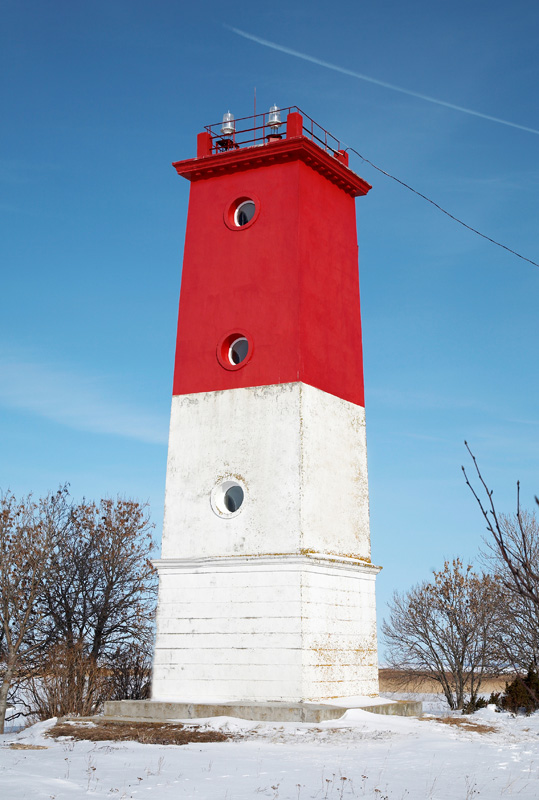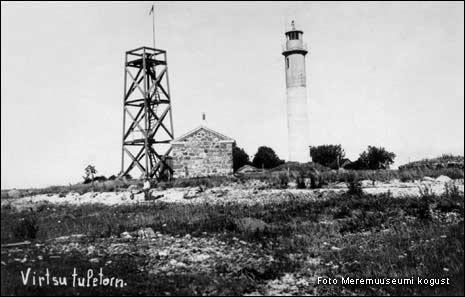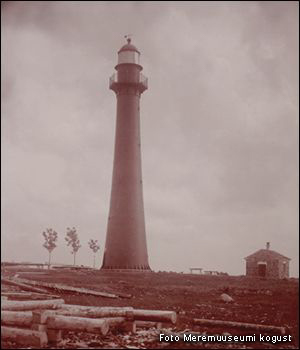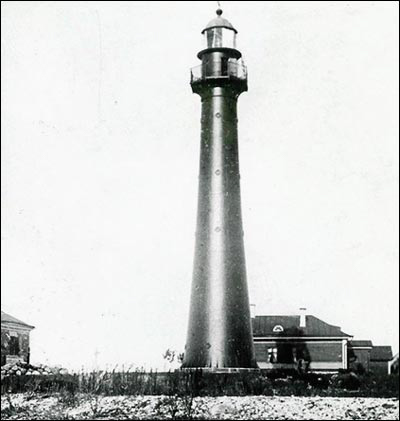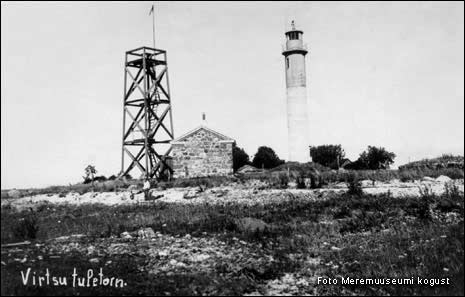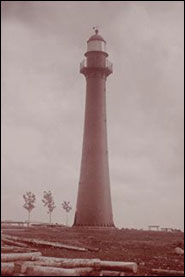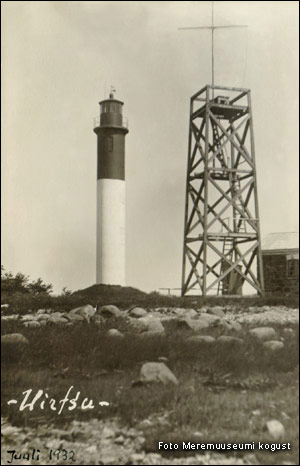
The lighthouse is located by the Suur Väin sea route, helping with navigation and making the passage through Viire Strait safer.
The need for building the Virtsu (Werder) lighthouse was first justified in the assessment of the state of the Baltic Sea shipping routes and lighthouses after the Crimean War in 1856.
In 1863, a cast-iron lighthouse from the English company Porter & Co and a 3rd order fixed dioptric apparatus from Chance Brothers & Co were ordered. Construction of the lighthouse foundation and service buildings began the same year.
In 1865, the 28-meter tall brown tower with a green cupola was completed and became operational in 1866. The light, located 29 meters above sea level, had a visible range of 11 miles. The light was divided into sectors: white SE 16° over S to SW 18°, and red SW 18° over W to NW 42°. The white sector marked the sea route through Viire Strait, while the red light indicated the western edge of Viire Strait and anchorage. In those days, it was considered risky to sail in the Väinameri during the day, and vessels often anchored in Viire Strait, waiting for daylight and favorable winds. Service buildings near the lighthouse included a keeper's residence, a sauna, and a well.
In 1881, following the completion of the Viirelaid Lighthouse, the light sectors of the Virtsu Lighthouse were modified. In 1882, the complex was complemented with a stone petroleum shed. By 1900, the lighthouse was equipped with a 2nd order fixed dioptric apparatus. The red sector was eliminated, and the white sector was altered to SE 16° over S and W to NW 42°. The lighthouse was painted red. The crew had a telephone connection with the Virtsu Harbor telegraph station.
By 1914, the light's visibility had been increased to 16 miles.
The lighthouse was destroyed by the Russian army in 1917 during the First World War. It is likely that the wooden service buildings were also destroyed.
By 1920, a temporary lighthouse had been erected with a new automatic acetylene light from the Swedish AGA company. The light characteristic was Fl W 4 s; 0.4 + 3.6 = 4 s.
In 1924, under the leadership of engineer Erich Landesen, a new 18-meter tall concrete lighthouse with a 2.5-meter diameter was built. The lower part was painted white, and the upper part was red. An automatic acetylene light was installed in the iron lantern room, with the same light characteristic as the previous temporary lighthouse. The light sector covered 344° over N, E, and S to 184°. The last light sector was in use until the end of the 20th century. New accommodations for the lighthouse keepers were built one kilometer away in Virtsu Harbor, under the same roof as a passenger waiting area.
In 1944, the concrete lighthouse was destroyed by German forces. In 1945, a temporary four-sided wooden pyramid was placed on top of the white stone building. The lantern at the top was 8 meters above the ground. An automatic acetylene light was positioned at a height of 11 meters above sea level, with a visible range of 11 miles. The light characteristic and sector remained the same as before the war.
In 1951, according to the Virtsu standard project, a new 18-meter tall conical stone concrete lighthouse was constructed. It was equipped with an acetylene energy lantern at a height of 19 meters above sea level, providing a visibility range of 12 miles. The light characteristic and sector remained unchanged. By 1971, a new lantern had been installed in the lighthouse. The light characteristic had changed to Fl W 5 s; 1.5 + 3.5 = 5 s and remained in use to the present day. The lighthouse was connected to the electric grid, and the previous automatic acetylene lantern was kept in reserve.
Today, the lighthouse features modern lighting equipment with a Sabik NL-300 lantern.
Of the earlier service buildings, only the stone petroleum shed, cellar, and the foundations of some service buildings remain. A rescue station was also located at the lighthouse from 1895 to 1917.
